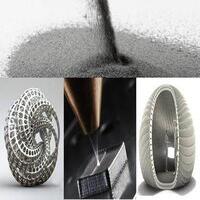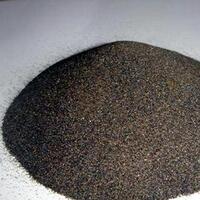**Bend It, Stretch It, Squish It: Which 3D Printing Material Wins the Flexibility Crown?**
(What 3d Printing Material Is The Most Flexible)
Imagine a material that bends like rubber, stretches like a slinky, and bounces back like a trampoline. Sounds like something from a sci-fi movie? Not anymore. The world of 3D printing has cracked the code on flexible materials, turning wild ideas into squishy, stretchy reality. But with so many options, which one takes the crown for ultimate flexibility? Let’s dive in.
First up: **TPU (Thermoplastic Polyurethane)**. Think of TPU as the superhero of flexible filaments. It’s tough, elastic, and handles stress like a champ. Print a phone case with TPU, and it’ll survive drops, twists, and even a run through the washing machine (ask me how I know). TPU comes in different hardness levels, measured in Shore scales. Shore 85A feels like a stiff rubber band, while Shore 60A is closer to a soft shoe sole. It’s widely used for grips, hinges, and even wearable gear. The downside? Printing TPU can feel like wrestling spaghetti. It’s sticky, stringy, and demands patience.
Next, meet **TPE (Thermoplastic Elastomer)**. If TPU is the superhero, TPE is its stretchier cousin. This stuff is so flexible it’s almost floppy. Ever seen those bendy action figures? That’s TPE in action. It’s perfect for toys, squishy grips, or anything that needs to wobble without breaking. But there’s a catch. TPE’s flexibility makes it a nightmare for beginners. It warps, oozes, and clogs nozzles faster than you can say “print failure.”
Then there’s **Flexible PLA**. PLA is the go-to material for 3D printing newbies—it’s easy, reliable, and smells like pancakes while printing. Flexible PLA takes that simplicity and adds a dash of bendiness. It’s stiffer than TPU or TPE, more like a firm rubber. Use it for prototypes that need a little give, like snap-fit parts or cushioned soles. But don’t push it too far. Flexible PLA cracks under pressure if bent too hard or too often.
Let’s not forget **NinjaFlex**. This specialty filament is the rockstar of flexibility. NinjaFlex laughs at extreme bends, stretches to twice its length, and bounces back like nothing happened. Print a watchband with it, and it’ll flex with your wrist all day. The problem? It’s pricey, tricky to print, and demands a direct-drive extruder. For hobbyists, it’s like taming a wild horse—thrilling but exhausting.
What about resins? **Flexible Resins** exist too. These liquid-based materials cure into rubber-like parts under UV light. They’re ideal for detailed, squishy designs like gaskets or medical models. The finish is smooth, almost velvety. But resin printing is messy, smelly, and requires post-processing. Plus, flexible resins aren’t as durable as TPU or NinjaFlex. They degrade faster under heat or sunlight.
So, who’s the winner? It depends. Need something tough and print-friendly? TPU is your buddy. Want maximum stretch? NinjaFlex steals the show. On a budget? Flexible PLA gets the job done. Resins shine for precision but lack longevity. Each material has its quirks, like a toolbox where every tool has a specialty.
(What 3d Printing Material Is The Most Flexible)
The real magic happens when you match the material to your project. Think about how much flex you need, how durable it should be, and how much time you’re willing to spend tweaking printer settings. Flexibility isn’t a one-size-fits-all game. It’s a playground of possibilities—ready to bend, stretch, and squish your ideas into reality.
Inquiry us
if you want to want to know more, please feel free to contact us. (nanotrun@yahoo.com)

